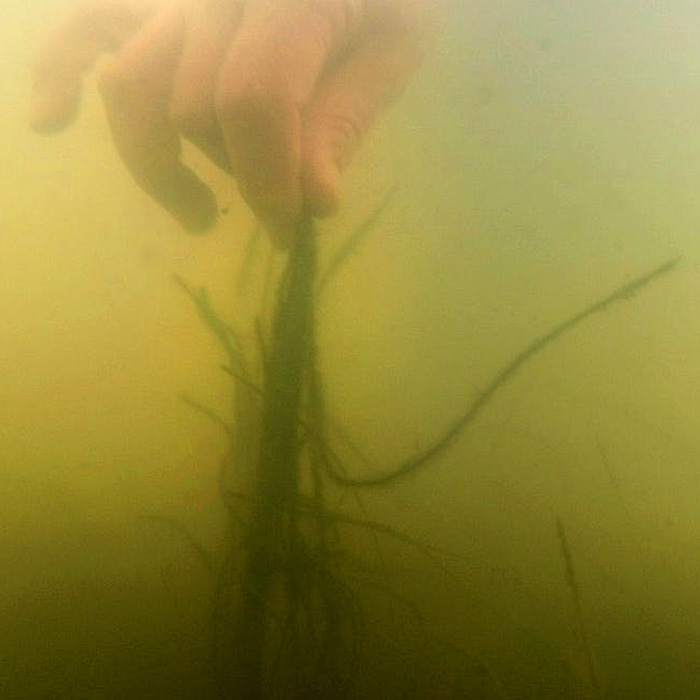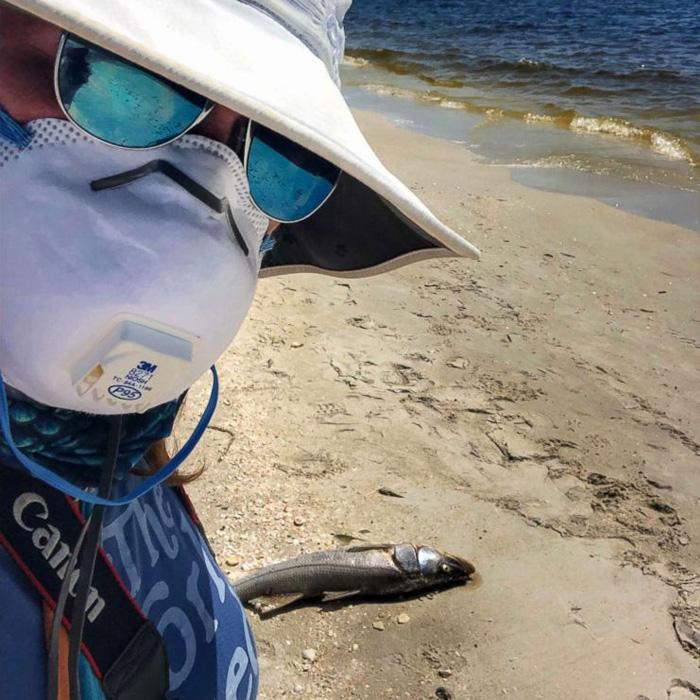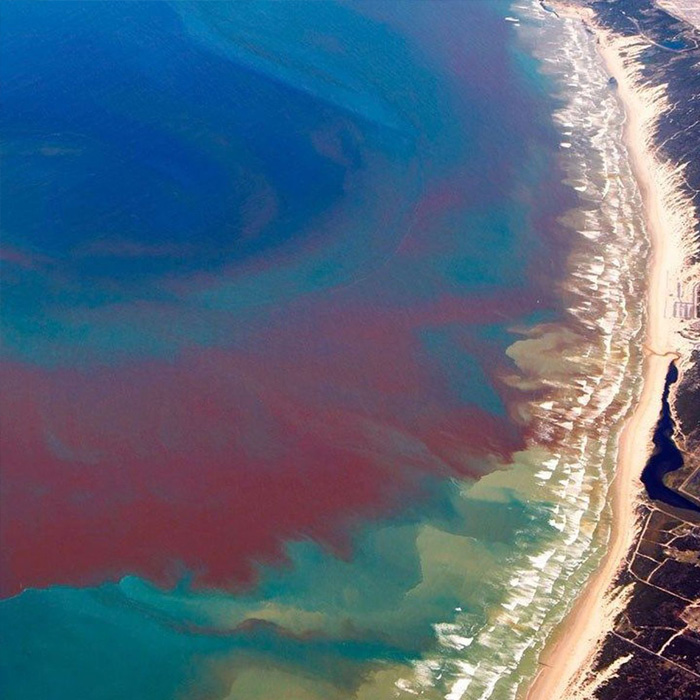Harmful Algal Blooms
Over the last few decades, Harmful Algal Blooms (HABs) have become more prevalent worldwide. Today, the geographic range of HABs has expanded and the number of species responsible for blooms has increased. In addition, blooms have been occurring more frequently, lasting longer and are more severe. These events have a wide range of negative impacts on the environment, wildlife, people and the economy.

Environmental Impacts:
HABs are characterized by the rapid, uncontrolled growth of an algae population. During a phytoplankton bloom, the water column typically becomes cloudy, or turbid, and the depth that sunlight can penetrate is greatly reduced. This poses a serious threat to submerged vegetation, like seagrasses, which require sunlight to survive. Long lasting blooms can permanently damage seagrass beds and diminish their chance of recovery. In addition, these blooms can also have a variety of impacts on the animals living in an affected area. Excess phytoplankton can clog many filter feeding organisms like clams, oysters and sponges, causing them to starve. Some species of algae are even equipped with sharp spines that can injure the delicate gills of fish and shellfish. Large, dense blooms can also deplete the amount of oxygen in the water column and cause mass die-offs of animals in an area (like fish-kills). Unfortunately, during these events, decaying algae and animals release nutrients back into the water, which continue to fuel the bloom.

Human Health Impacts:
Many of the species that cause HABs can also produce harmful toxins. In humans, these toxins cause a wide array of illnesses, ranging from mild respiratory distress to permanent brain damage or, in some cases, death. People typically encounter HAB toxins through direct contact with water during recreational activities or by breathing contaminated air near bloom locations. Illness can also occur as a result of eating contaminated seafood, like fish or shellfish. Florida Department of Health provides additional information on Harmful Algal Blooms and associated health hazards.

Economic Impacts:
HABs can have significant impacts on Florida’s economy. Treating contaminated water and cleaning up beaches or waterways can be costly, especially during massive or long-lasting bloom events. Tourism and property values can suffer as a result of unsightly shorelines, odors from decaying material and inherent health hazards, making areas less popular to both visitors and residents. Recreational industries also incur losses due to a decline in popular activities like swimming, boating, fishing and sight-seeing. In addition, commercial fisheries are negatively affected due to shellfish closures, mortalities of wild fish stocks and a loss of sales due to declining consumer interests. Together, these factors pose a severe threat to Florida’s economy and will likely become worse with the increasing prevalence of HABs.